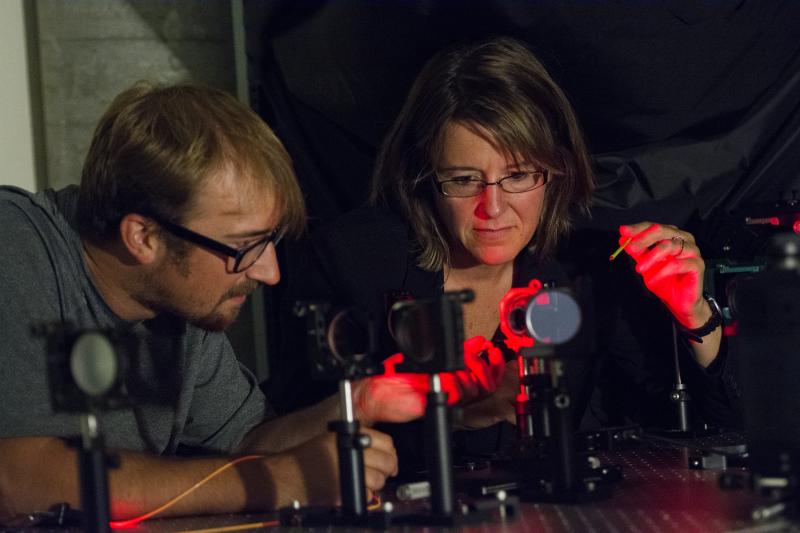Astronomy research centre capitalizes on Victoria’s star power

Adaptive optics system among research projects that put UVic at the head of major international collaborations
Today, Canadian astronomy expertise—and leadership in international “big science” projects like the $1.6-billion Thirty Metre Telescope (TMT)—is securing valuable research time for Canadian scientists at these new facilities while also drawing millions of dollars of high-tech contracts to BC.
As a leading and founding member of the TMT project, Canada has had an outsized role in the project’s development—including $70 million for adaptive optics instruments and components to be built by UVic adjunct professors at NRC-Herzberg and $150 million more for the sophisticated dome construction in Port Coquitlam.
The federal investment means Canadian astronomers will have observation time at the TMT to make tomorrow’s discoveries—exploring even the faintest stars in other galaxies, and the signatures of the formation of our universe .
The TMT is also expected to further accelerate the pace at which exoplanets (planets around other stars) are discovered, and make it possible to scan their atmospheres with much greater precision.
Advances in instrumentation like the Victoria-designed adaptive optics systems that are destined for the heart of the world’s next generation of telescopes are just part of why UVic’s Astronomy Research Centre (ARC) was founded.
As ARC Director Kim Venn explains, “there’s enormous expertise for designing and building cutting edge instrumentation in Victoria. The concentration of expertise to create these new systems has been incredibly important for the TMT.”
Gathering together the expertise of UVic faculty in engineering, physics and astronomy and the scientists and engineers at the NRC-Herzberg will help keep Canada at the forefront of similar international collaborations including the space-based James Webb Space Telescope (successor to the Hubble Space Telescope) and next-generation long-wavelength observatories such as the Square Kilometre Array.
A twinned history
Thanks to UVic and NRC Herzberg, the Victoria region is home to one of the largest concentrations of astronomy talent in Canada. Long before 2012—when Canada was recognized as having the highest research impact in astronomy of any G7 nation, astronomers in the Victoria region were already having a high impact internationally.
The Plaskett Telescope at the Dominion Astrophysical Observatory in Saanich was designed to be the largest telescope in the world when it was completed in 1918, though a swiftly constructed US facility kept it from securing that record. Later in the century, as the first head of UVic’s physics department, John Climenhaga was adamant that a telescope be built on campus. Constructed on the roof of the Elliott building, it served as an important precursor to the 32-inch DFM telescope now atop the Bob Wright Centre—the largest on-campus telescope in Canada.
World-class facilities have gone hand-in-hand with scientific achievement, as UVic astronomers and engineers are now world-renowned for their work on galaxy evolution, star formation and stellar evolution, exoplanets and cosmology. The first adaptive optics system—delivered to the Gemini Observatory—was built by Victoria-based astronomers. Among other feats, it helped estimate the age of the universe, based on stellar lifetimes.
That kind of expertise has also spurred major international scientific collaborations that rely on Victoria-based researchers to design, staff and conduct research programs at the next generation of astronomical facilities, including the TMT, the Atacama Large Millimeter Array in Chile, the Square Kilometer Array in Australia and South Africa, and the powerful James Webb Space Telescope, scheduled for launch in 2018.
Whether you’re a skywatcher or not, breakthroughs in astronomy are making an impact on Earth as well. Astronomy has consistently driven terrestrial progress in imaging technology—providing significant advances in medicine, as well as the sensors in modern digital cameras, wireless networking and image processing.

